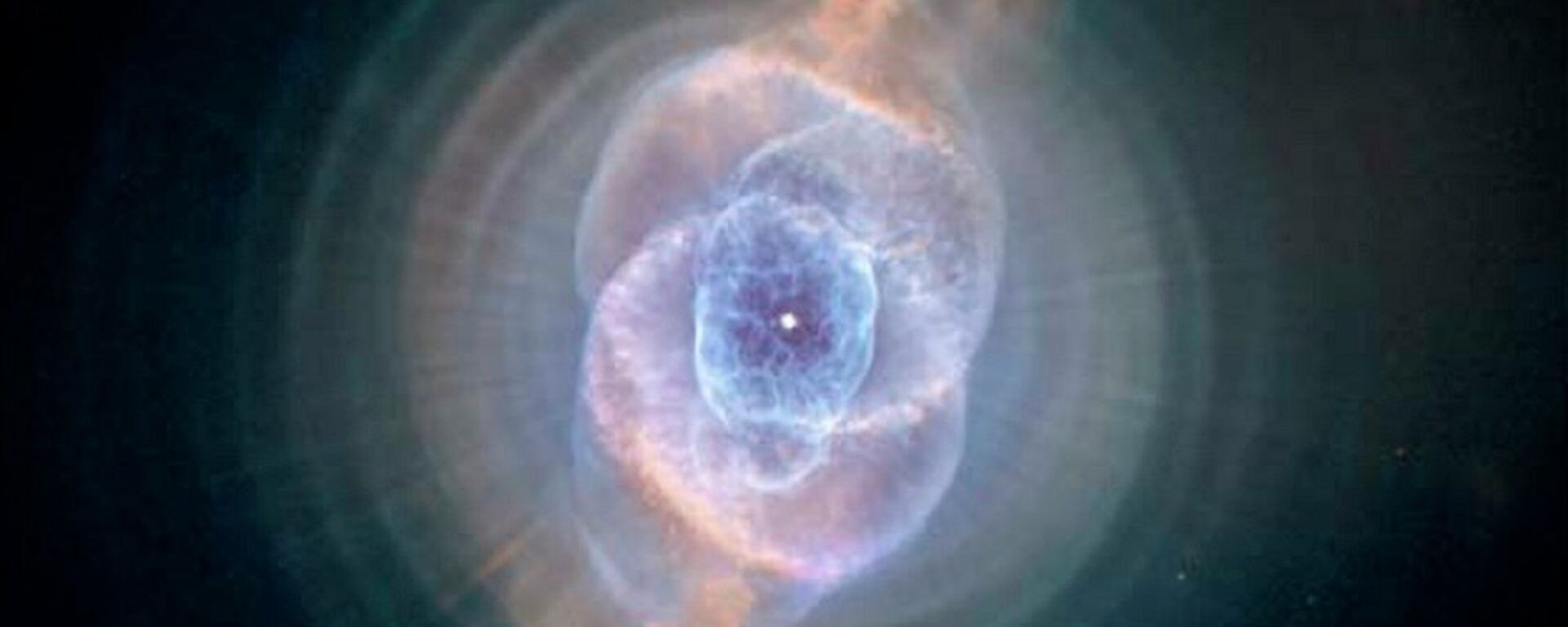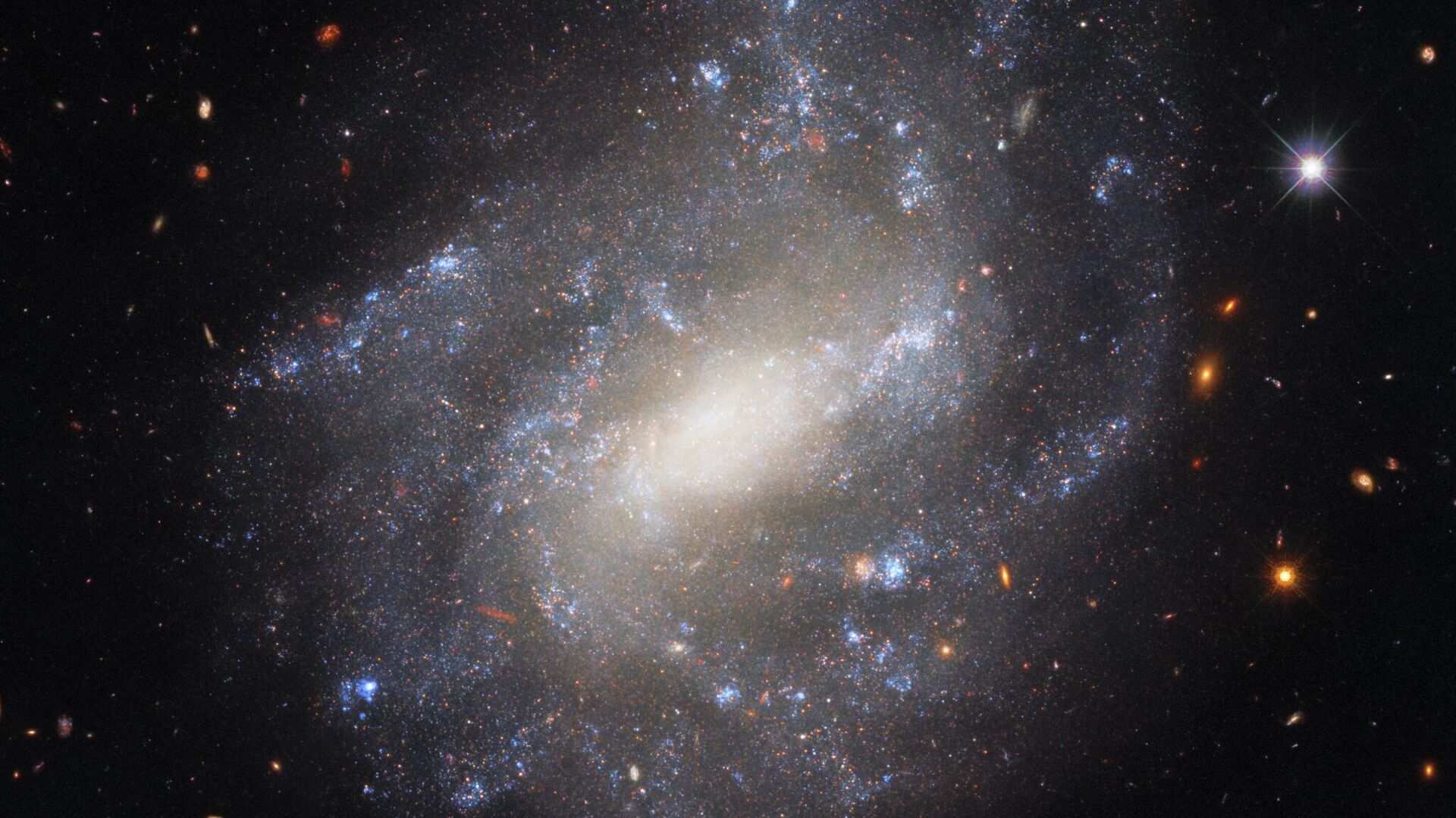https://sputnikglobe.com/20221030/galactic-natural-laboratory-helps-work-out-space-distance-measuring-techniques-1102850769.html
Galactic 'Natural Laboratory' Helps Work Out Space Distance Measuring Techniques
Galactic 'Natural Laboratory' Helps Work Out Space Distance Measuring Techniques
Sputnik International
The galaxy in question features two distinct types of light sources - Cepheid variable stars and a supernova - thus providing scientists with means to "improve... 30.10.2022, Sputnik International
2022-10-30T17:28+0000
2022-10-30T17:28+0000
2022-10-30T17:28+0000
science & tech
galaxy
distance
measurement
hubble space telescope
https://cdn1.img.sputnikglobe.com/img/07e6/0a/1e/1102850937_0:581:2047:1732_1920x0_80_0_0_e07a1acdb982fd183f4cae33adbbf9cf.jpg
Researchers operating the Hubble Space Telescope have unveiled a photo of a distant spiral galaxy that may help astronomers measure distances to the more remote celestial bodies out there.Designated UGC 9391, the galaxy in question resides in the Draco constellation, some 130 million light years away.The image of the galaxy was released late last month and is part of a set of observations performed by the space telescope, which astronomers used in the creation of the so-called “Cosmic Distance Ladder” – a "set of connected measurements” expected to help gauge how far some of the more distant objects in space actually are.As European Space Agency explained in a statement accompanying the galaxy’s image, distance in space can only be directly measured for objects located roughly 3,000 light years away. For the celestial bodies that lie even farther away, astronomers have to “rely on a set of measured correlations calibrated against nearby objects.”What makes UGC 9391 so handy is the fact that this galaxy light sources such as Cepheid variable stars and a supernova, thus providing researchers with “a natural laboratory in which to compare two measuring techniques” and helping them "improve their distance estimates."“Improving the precision of distance measurements helps astronomers quantify how quickly the universe is expanding – one of Hubble’s key science goals,” the space agency noted.
https://sputnikglobe.com/20221008/new-3d-model-of-cats-eye-nebula-hints-at-its-binary-star-past-1101631602.html
Sputnik International
feedback@sputniknews.com
+74956456601
MIA „Rossiya Segodnya“
2022
Sputnik International
feedback@sputniknews.com
+74956456601
MIA „Rossiya Segodnya“
News
en_EN
Sputnik International
feedback@sputniknews.com
+74956456601
MIA „Rossiya Segodnya“
Sputnik International
feedback@sputniknews.com
+74956456601
MIA „Rossiya Segodnya“
science & tech, galaxy, distance, measurement, hubble space telescope
science & tech, galaxy, distance, measurement, hubble space telescope
Galactic 'Natural Laboratory' Helps Work Out Space Distance Measuring Techniques
The galaxy in question features two distinct types of light sources - Cepheid variable stars and a supernova - thus providing scientists with means to "improve their distance estimates."
Researchers operating the Hubble Space Telescope have unveiled a photo of a distant spiral galaxy that may help astronomers measure distances to the more remote celestial bodies out there.
Designated UGC 9391, the galaxy in question resides in the Draco constellation, some 130 million light years away.
The image of the galaxy was released late last month and is part of a set of observations performed by the space telescope, which astronomers used in the creation of the so-called “Cosmic Distance Ladder” – a "set of connected measurements” expected to help gauge how far some of the more distant objects in space actually are.
As European Space Agency explained in a statement accompanying the galaxy’s image, distance in space can only be directly measured for objects located roughly 3,000 light years away. For the celestial bodies that lie even farther away, astronomers have to “rely on a set of measured correlations calibrated against nearby objects.”

8 October 2022, 10:01 GMT
What makes UGC 9391 so handy is the fact that this galaxy light sources such as Cepheid variable stars and a supernova, thus providing researchers with “a natural laboratory in which to compare two measuring techniques” and helping them "improve their distance estimates."
“Improving the precision of distance measurements helps astronomers quantify how quickly the universe is expanding – one of Hubble’s key science goals,” the space agency noted.


